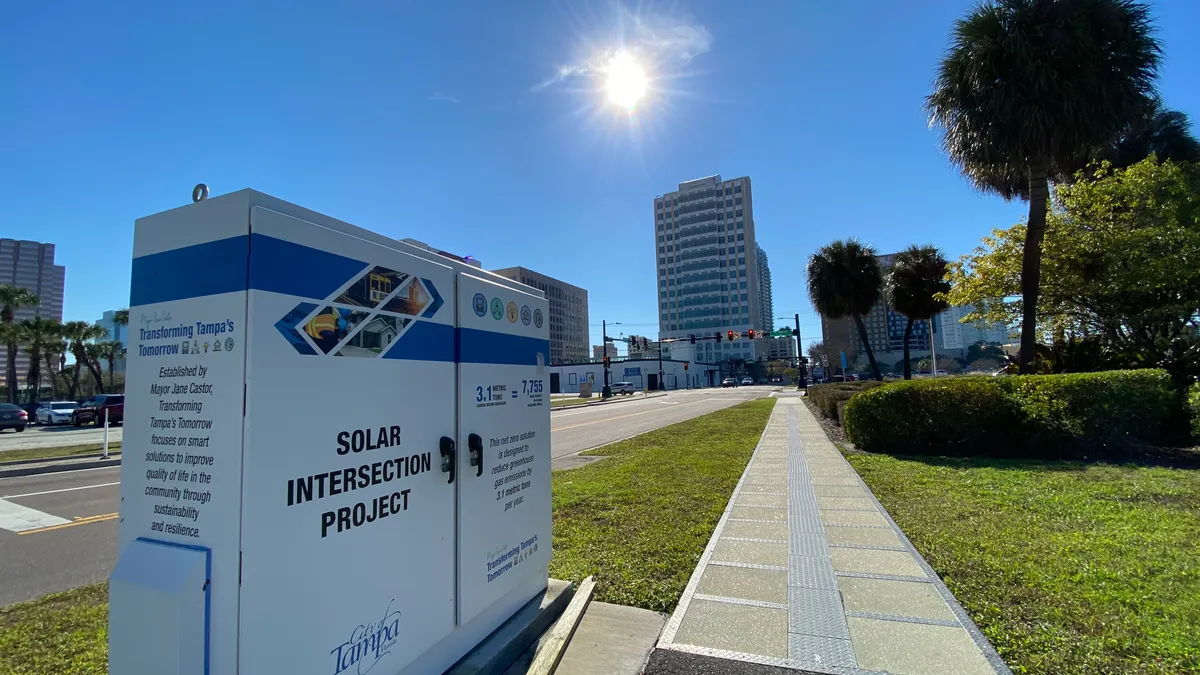Hurricane Irma wreaked havoc across Tampa, Florida, in 2017, knocking out power in some areas. At traffic lights, that meant traffic slowdowns at best and dangerous crashes at worst. That experience inspired the city to seek a new source of backup power for traffic intersections.
“It's a pretty dangerous condition to have a signal, or particularly a series of signals, dark in unlit conditions,” said the city’s Smart Mobility Manager Brandon Campbell. “It's hard for people to see traffic signals when both they are dark and the surrounding infrastructure is out of power as well.”
Since summer 2020, the city has piloted solar panels embedded on sidewalks, a design meant to protect the panels from storm-force winds. They’re specially made by Canadian company Solar Earth to be strong enough to withstand being run over by a lawnmower and have a slip-resistant coating for walkers, Campbell said. The goal was to be able to locally generate three-to-five days worth of power. The Tampa Bay Times reported that through the pilot program, the city has installed 84 solar panels at a downtown intersection.
Progress on the idea happened relatively quickly following Irma due to buy-in from different departments, and the fact that the $45,000 cost of the project already fit within the existing budget. “We have had a history within our mobility department of finding ways to pilot things in the field and to really treat our city as an open laboratory,” Campbell said.
While Hurricane Ian this fall didn’t hit Tampa directly, it did provide an opportunity for city officials to assess how the solar installations held up amid some power outages and less-than-sunny conditions.
“During Ian, we saw that it continued to generate power, at least nominally during that day that it was cloudy and rainy and virtually no sun shining on them. So that was a positive,” Campbell said. “Looking back at our power bill, at this point, it's generating about three-quarters of what we would use on a typical month.”
Going forward, Campbell said the team will assess the technology in different conditions and at different times of year, and will see what maintenance is involved.











